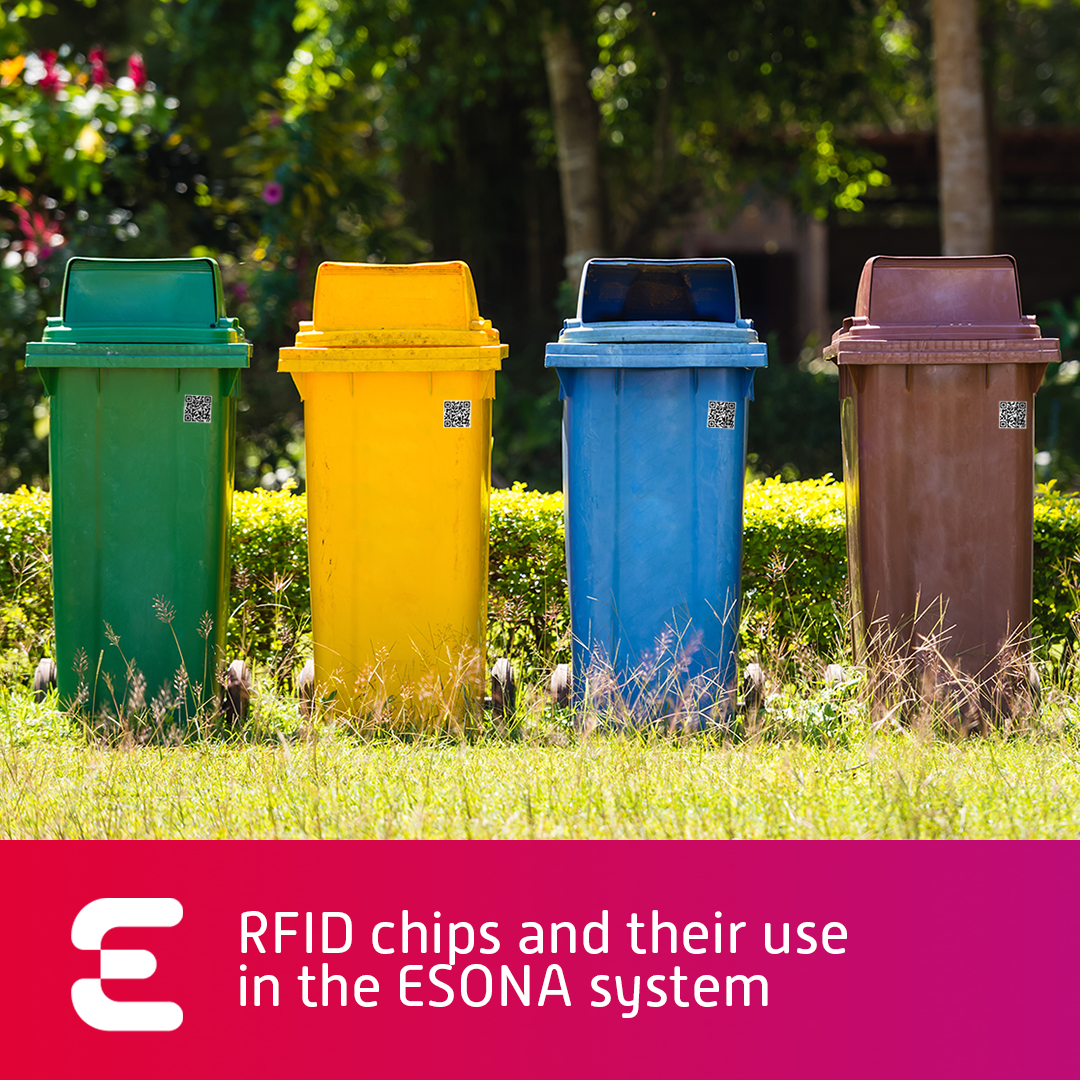RFID chips and their use in the ESONA system
What is RFID tagging?
Although you may not have heard of it yet, this is nothing new. RFID is a technology that uses high-frequency radio waves to identify objects. The technology works on a similar principle as a bar code, but unlike it, it can also be used in more demanding conditions – for example in dusty, polluted, noisy, or humid environments.
From the very beginning of its existence, RFID technology was used in the USA to monitor the movement of cattle on local farms. However, it has gradually found application in many other areas, and today we encounter it, albeit often unknowingly, at every step.
Where? For example, when shopping – store owners use RFID chips and readers to secure goods from theft.
What RFID technology consists of
Although the term chip is used in common parlance, it is in fact an electronic RFID tag (also referred to as a “tag” or “transponder”). Each label consists of the chip itself and the antenna. The chip encodes data that identifies the object to which the label is attached. The antenna allows the chip to send information to the reading device. In the case of the so-called passive tags, which do not contain their own power supply, the antenna supplies the chip by induction from the RF signal generated by the reading device.
The tag may take the form of a sticker or a label but is also available in other versions. It can be attached to or embedded in objects. RFID tags can be placed on various types of goods, components, vehicles, surfaces, materials, and therefore there are many types of tags, whether in shape, size, material, or feature. There are many types and based on criteria such as memory type, frequency band, power supply type, dimensions, or price. The RFID reader is used both to record and write data to RFID tags, but of course also to read them and identify the object on which the tag is located.
How RFID can be used to export waste
Many municipalities already have experience with “chipping containers”. RFID tags can be used to mark individual waste containers, waste bags, and hermetically sealable containers for biodegradable and organic waste. Each container has a unique code in the chip, which is assigned to the owner of the container in the information system of the municipality.
Thanks to the chips, the municipality has an overview of which container belongs to whom, and this information also serves as a basis for determining the payment order for the export of waste. When emptying a container, a specific container is automatically or manually identified by an RFID reader, so those waste collectors, as well as local governments, obtain clear data on when, how much, and what kind of waste they exported in the municipality.
How does RFID work in conjunction with ESONA?
ESONA application connects all parties involved in waste exports: the municipality, waste exporters, and citizens using waste bins. The system enables comprehensive monitoring of waste collections: records of waste containers, time, and place of removal itself. First, all containers must be chipped with RFID tags in the form of smart stickers or plastic tags. Subsequently, RFID readers are installed on the collection vehicles, which read the data from the RFID tags during the actual export and automatically send them to the ESONA application. There, the citizen, the municipality, and the waste exporter can find them to various extents.
RFID chips are irreplaceable in the entire monitoring process, because thanks to them and the data they contain, a clear record of all containers are created in the system.

